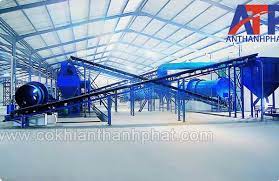Introduction
Window tinting has evolved from a simple aesthetic enhancement to a multifaceted solution that offers numerous benefits for homes, office window tinting, and commercial buildings. This process involves applying a thin film to the interior or exterior of glass surfaces, providing advantages that range from improved energy efficiency to enhanced privacy. In this article, we’ll explore the various types of window tints, their benefits, applications, and considerations for choosing the right tint for your needs.
Types of Window Tinting
- Dyed Window Film: This type of film uses multiple layers of dye to absorb solar heat. While it’s an affordable option, it may fade over time and is less effective at blocking UV rays compared to other types.
- Metalized Window Film: Composed of tiny metallic particles, this film reflects heat and UV rays. It’s more durable than dyed films and offers better heat reduction, but it can interfere with electronic signals, such as GPS and cell phone reception.
- Hybrid Window Film: Combining dyed and metalized layers, hybrid films offer a balance of heat absorption and reflection without significant signal interference. They are durable and provide good performance.
- Ceramic Window Film: Made from nano-ceramic particles, this film provides excellent heat and UV protection without affecting visibility or electronic signals. It’s one of the most expensive options but offers superior performance and longevity.
- Carbon Window Film: This film uses carbon particles to block infrared light and reduce heat. It doesn’t fade over time and provides excellent UV protection and durability.
Benefits of Window Tinting
- Energy Efficiency: Window tinting helps reduce heat gain during the summer and heat loss during the winter, leading to lower energy consumption and reduced utility bills. This is particularly beneficial for large buildings with extensive glass surfaces.
- UV Protection: High-quality window films can block up to 99% of harmful UV rays, protecting occupants from skin damage and preventing furniture, flooring, and artwork from fading.
- Increased Privacy: Tinted windows offer privacy by reducing the visibility from the outside while maintaining a clear view from the inside. This is especially useful for ground-floor windows and vehicles.
- Enhanced Comfort: By reducing glare and regulating indoor temperatures, window tinting creates a more comfortable living or working environment. It minimizes the need for artificial lighting and improves overall comfort.
- Safety and Security: Window films can reinforce glass, making it more shatter-resistant. In the event of an accident or break-in, the film holds the glass together, reducing the risk of injury from flying shards.
- Aesthetic Appeal: Tinted windows can enhance the appearance of a building or vehicle, giving it a sleek and modern look. With various shades and colors available, you can customize the tint to match your style.
Applications of Window Tinting
- Residential Buildings: Homeowners use window tinting to improve energy efficiency, increase privacy, and protect interiors from UV damage. It’s an investment that pays off through reduced energy bills and enhanced comfort.
- Commercial Buildings: Businesses benefit from window tinting by creating a more comfortable working environment, protecting assets, and reducing overhead costs. It also helps in maintaining a professional appearance.
- Automobiles: Car owners tint their windows for privacy, UV protection, and to reduce the heat inside the vehicle. It also adds to the aesthetic appeal of the car and enhances security by making it harder for potential thieves to see inside.
- Specialty Applications: Window tinting is also used in various specialty applications, such as marine vessels and aircraft, where it helps manage heat and glare while offering UV protection.
Choosing the Right Tint
When selecting a window tint, consider factors such as the level of UV and heat protection needed, the desired level of privacy, and the impact on visibility and electronic signals. It’s also important to comply with local regulations regarding the permissible tint levels for vehicles and buildings. Consulting with a professional installer can help ensure that you choose the right product for your specific needs and get the most out of your investment.
Conclusion
Window tinting is a versatile and practical solution that offers a range of benefits, from energy efficiency and UV protection to enhanced privacy and aesthetic appeal. Whether for residential, commercial, or automotive applications, window tinting can significantly improve comfort, safety, and style. As technology advances, the options and performance of window films continue to expand, making it a smart choice for anyone looking to enhance their environment.
